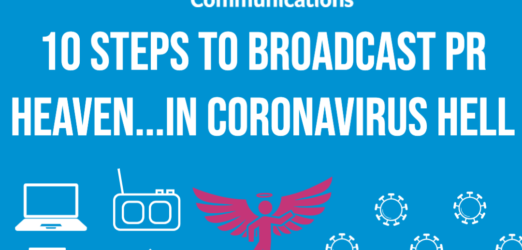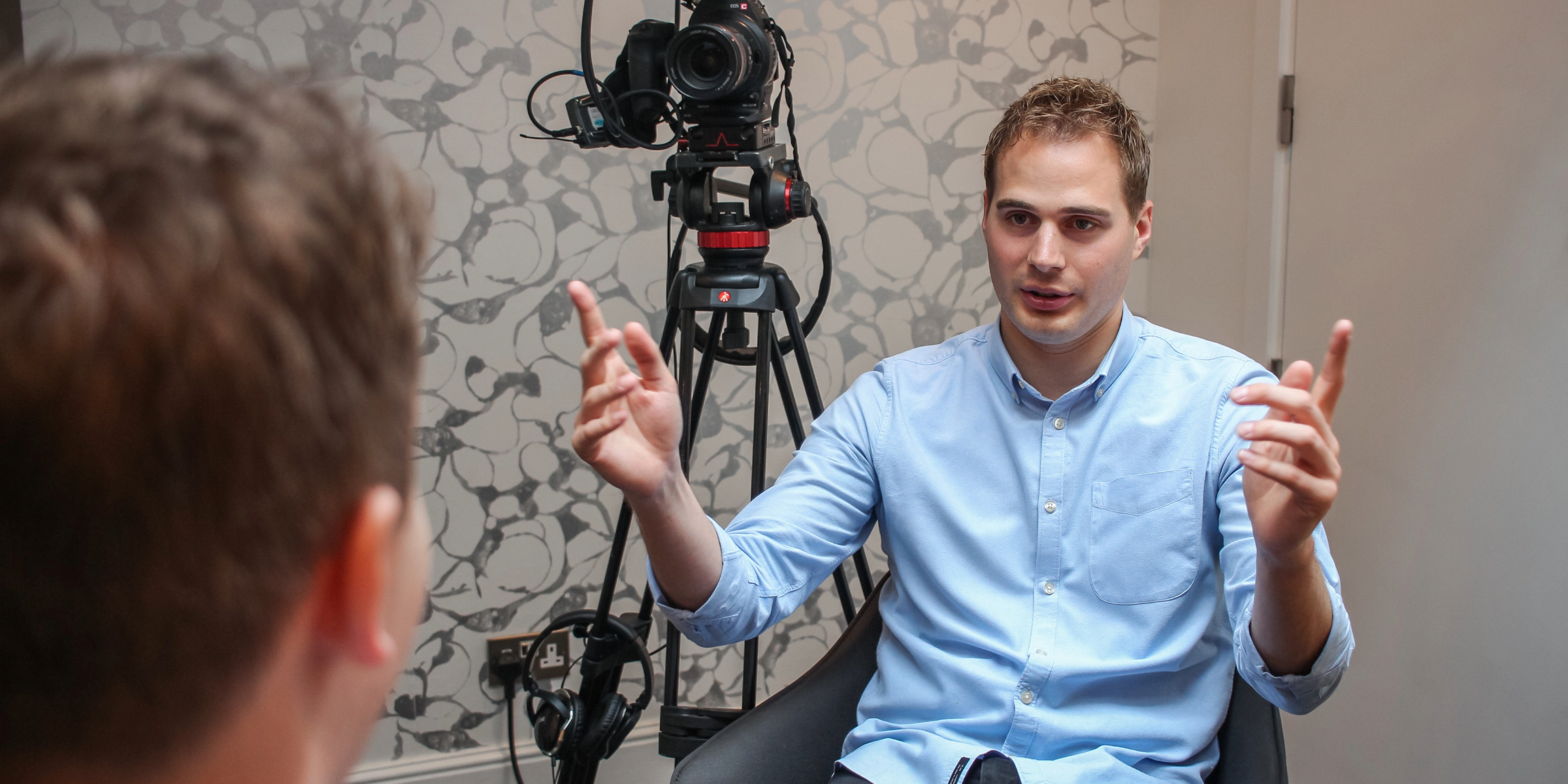It’s challenging, often frustrating and you have to hold your nerve, but it is more than possible to reach that nirvana of so many PR campaigns, television and radio, despite the strange and uncertain times we live in. Here are our 10 steps to success, amended to include the challenges posed by the COVID-19 pandemic.
We take a look at radio days, TV sell-ins, online PR video production and media training.
STEP 1: Think like a broadcast journalist
The majority of broadcast PR stories are placed on news or daytime programming, so need to be tailored to these outlets. It’s said news is comprised of information, education and entertainment – but the latter, engaging/interesting content, is the most important feature.
Broadcast news journalists want a new story, or the very least a new twist on an old story. There’s not really space for features, they want a tale that can be pegged to a specific day.
In these days of COVID-19 they’re currently looking for alternatives to the main news agenda. Frankly they, and their audiences, are beginning to get story fatigue. Of course, we need to know what’s happening with Coronavirus but lighter stories (ideally with some sort of link to the pandemic) are much in demand.
STEP 2: Think timing
Always dovetail broadcast coverage with whatever you’re planning for print and online. If a story has already been in the newspapers, broadcasters will consider it too old to run.
Allowing about a week to interest a broadcaster in a story is generally our rule of thumb – so we can get a story onto the longer-term planning list. But in Coronavirus times be prepared for last minutes changes, in keeping with the moving news agenda – opportunities as well as cancellations.
STEP 3: Talk their language
Never is this truer than with a broadcast PR press release. Less is more! No more than a page and write it like a broadcast cue. That means writing colloquially, as you would speak. We’ll include an attention-grabbing headline, but the top line of the story needs to be summed up in a sentence. With Coronavirus in mind see if there’s any link with the PR story and the ongoing pandemic.
STEP 4: The perfect spokesperson
They’re willing and available, entertaining, opinionated and always presentable – whatever that means to their brand or organisation. Whether they’re speaking on radio or television, they’re also likely to have been media trained.
Sometimes the perfect spokesperson is not your brand one, it’s a third party, be that a celebrity spokesperson or an expert spokesperson, such as a psychologist, doctor or academic.
Step 5: Think pictures and sound
What can we film is the first question a TV producer will ask. Not a lot is the current answer. Camera crews are only being sent out for the top stories. The rest is covered using library footage – or B-roll footage.
Never has there been a better time to have a B-roll up your sleeve. By B-roll I mean 7-8 minutes of roughly edited footage that illustrates a PR story. You might not be able to go out and film this from scratch, but what do you have that has already been filmed, but could be re-edited?
Make sure you follow our 2 golden rules, to ensure your B-roll gets used.
STEP 6: Case studies
Case studies bring a story to life and make it relevant to the audience. But make sure they know what to expect and brief them to be on message.
STEP 7: Online video
Radio and television stories are generally pegged to a particular day. The impact they have can be huge, but they don’t share the longevity of online radio. Whether national or regional, once the videos are posted they tend to be there for the duration.
Broadcast is broad by name and broad by nature. They reach huge audiences whereas online video can be more specific and targeted. That said, it has become more difficult to get a video posted online as a lot of websites prefer to run TV clips or content with celebrities.
STEP 8: Regional radio and television
The appetite for content on regional radio never seems to abate, hence why we are able to guarantee coverage for our radio days. But don’t forget regional TV too. Cutbacks in regional TV have led to fewer stations covering bigger areas – often large swathes of the country.
The two mediums share the same demands: they want local angles, statistics, case studies and spokespeople. That’s a lot of work, but the results are worth it.
STEP 9: Branding
A bit like a broadcast press release, less is more. There is always a balance to be found between the broadcasters’ restrictions on branding and the PR world’s need for it. One mention, either visually or audibly, is a successful interview; two and you’re doing exceedingly well. Three is probably the limit and that would have to be in a live interview, several minutes long. Anymore and it sounds like an advert – the BBC and commercial sector will take exception to that and you’ll be cut off short and not invited back again.
STEP 10: Technical support
Redundant for now, but worth bearing in mind for once we can all get out and about again. This is where you try to make life easier for the journalist with technical toys they may not have the resources for – particularly for a PR story. That can include everything from Outside Broadcasts for radio and television, to night vision cameras and macro lenses…..helicopter filming, cherry pickers….the list is endless and of course story dependent.
Outside Broadcasts
If you have an upcoming campaign and you’d like to talk to us about securing coverage on radio, TV or online please get in touch: hello@shoutcommunications.co.uk or call 020 7240 7373



